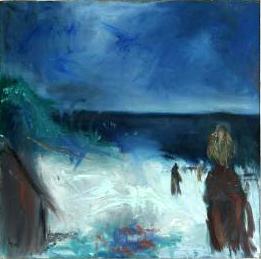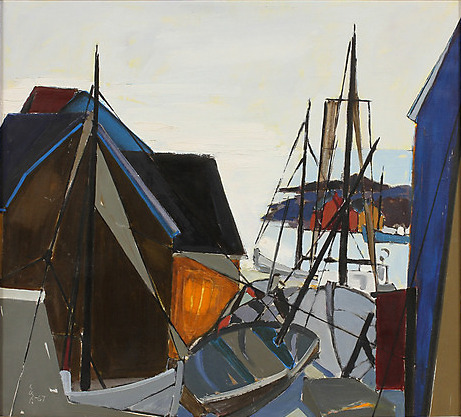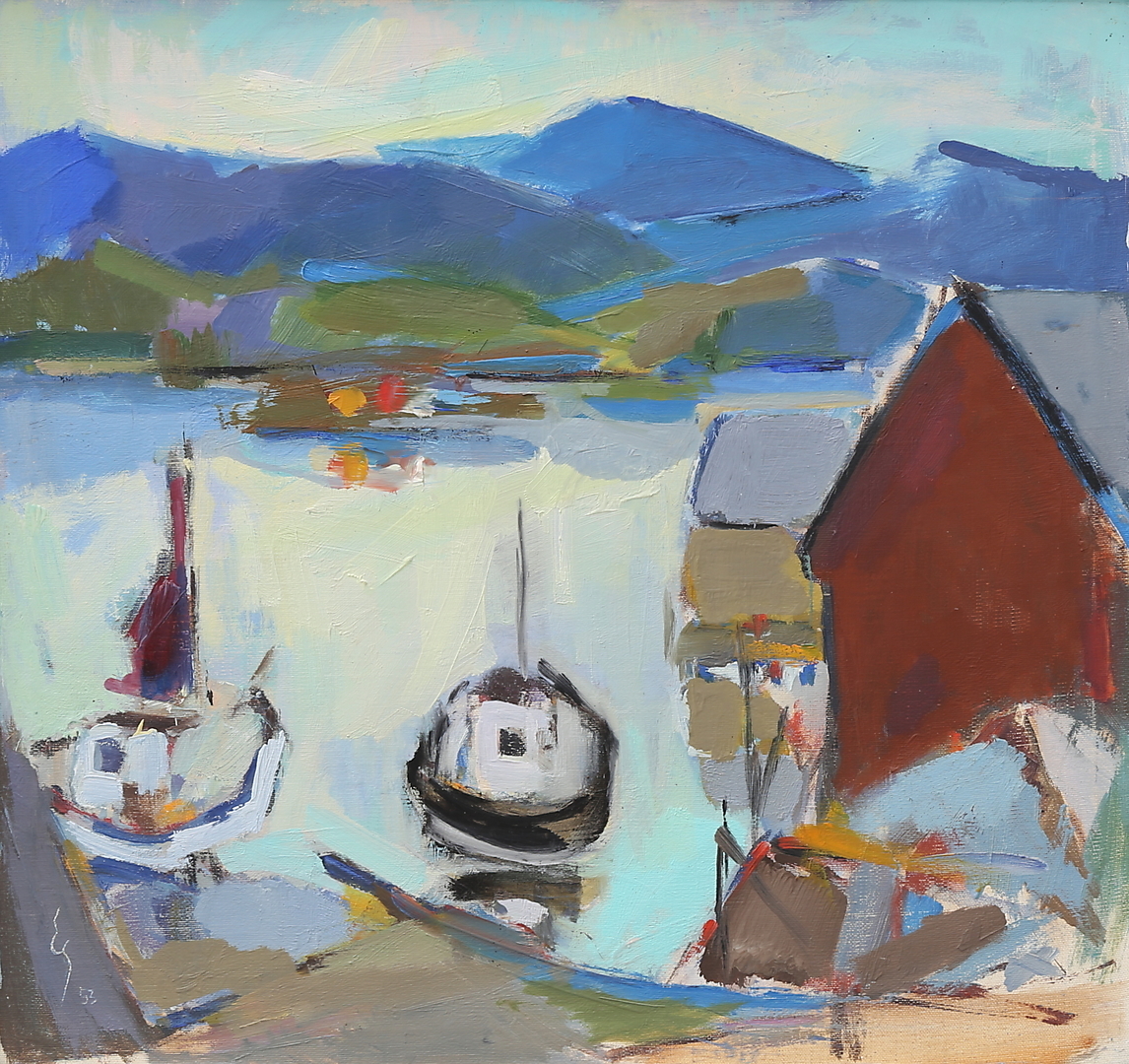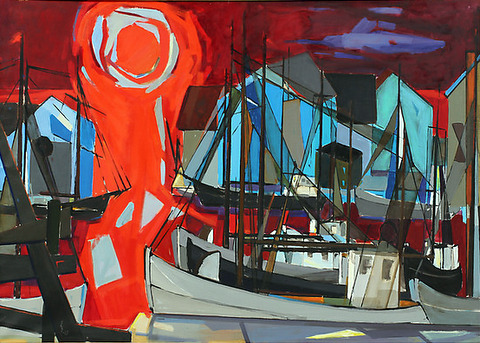GRUNDTVIG, Ernst
Ernst Andreas N. Grundtvig was born in the small Danish town of Herfoelge on 5 May 1920, youngest of three children and when aged three, his family moved north to Copenhagen where he was later to embark on his artistic career. On leaving school he set up studio in Nyhavn, at that time a squalid fishing dock and it was here, watching the boats arriving daily from North Atlantic adventures in the waters off Iceland and Greenland, that his interest in the sea began. Grundtvig found work as a stage designer for the nearby 'Det Kong Elige Teater' (Royal Theatre) and was admitted to the Danish art academy where he made friends with Per Luetken (1916-1998), Carlo Rosberg (1902-1994) and with Preben Siiger (1918-1990), who formed the art group Caravellen. Towards the end of the 1930s, Grundtvig was called to do his military service and rose to the rank of Lieutenant and with the onslaught of Second World War, Denmark was occupied on 9 April 1940. He then found work in the Deutsche Oper (Opera House) in Berlin as a stage designer and towards the end of his stay in Berlin, Grundtvig was arrested by the SS on suspicion of spying and on being released in 1945, returned to Denmark. For the next ten years Grundtvig travelled around Scandinavia painting and exhibiting his work spending lengthy periods on the Danish Island of Bornholm as well as along the Norwegian south and west coasts. He met Anne Wallin (born 1935) and in 1956 moved to the Swedish West and they married at Havstensund on 21 July 1957 settling in the small fishing town of Grebbestad. In 1965 Anne gave birth to their first son, Nicolai to be followed six years later by a second son, Andreas and the family moved to a merchant's house on the quay of the tiny hamlet Havstensund. Grundtvig had been commissioned to do a number of reliefs and sculpture for churches, schools and private organisations but it was his contact with the Swedish shipping firm 'Tor Line' that would lead to his biggest work being commissioned to adorn the stern staircase, with a relief of his work on two sister-ships, Tor Britannia and Tor Scandinavia (now Prince and Princess of Scandinavia) which he began in 1974. In 1977, it was the Southwest corner of Scotland that would lure the artist away from Sweden and the family moved to the remote village of Crossmichael near Castle Douglas, but the house was far too big for the family and one chilly winter was enough to lead to the breakup of the family. Anne and Andreas moved to East Anglia to be near the Sweden-ferry harbour town of Felixstowe and a year later Grundtvig and his eldest son Nicolai moved to be near the family and set up home and studio at Snape Maltings, both in Suffolk. Here he had much easier access to Scandinavia, and he exhibited regularly in Sweden as well as being commissioned by 'Scandinavian Seaways', who had taken over 'Tor Line'. Exhibitions included at The Danish Club in Knightsbridge in London, and at Snape Maltings Galleries. Having fought for some time against cancer, shortly before Christmas 1993, Ernst Andreas N. Grundtvig was admitted to the Ipswich Hospital where he died on 30 January 1994, aged of 73. Ernst Grundtvig is represented in numerous museums and public buildings across Northern Europe as well as in private collections such as that of King Harald of Norway. In 1999, a sell-out exhibition of the artist's work was held at Shingle Street, Woodbridge, Suffolk where his ashes are scattered off the Suffolk shore.
Works by This Artist

|
Coast with FiguresOil on canvas
|

|
Coastal image with Sailing ShipsOil on canvas
|

|
OktoberfestOil on canvas
|

|
Composition with Sailing ShipOil on canvas
|